10 Technologies That Need to Make a Comeback
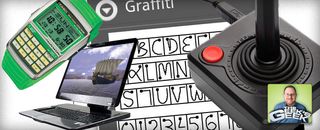
"They just don't make 'em like they used to" is a phrase we hear often from old folks and, as I get more years under my belt, I find myself saying it more and more to the young twenty-something whipper snappers in my office. Yeah, I'm talking about the same ones who've never played a cassette tape, dialed up to a BBS, or booted into DOS.
While my young friends can count themselves lucky that they never encountered a busy signal when connecting to Compuserve, there are some great technologies from the past 30 years that would serve us well today--if only time and corporate bean counters hadn't passed them by.
Palm Graffiti
With HTC coming out with the Flyer/EVO View and ASUS planning the MeMO , it seems like pen-input could be making a tablet comeback. What you really want from pen-input is to take the letters you scribble on screen and turn them into text so that your system can search it, organize it, spell check it, etc. But what if your handwriting, like mine, is so bad that even good OCR software can't interpret it? Palm had this problem licked 15 years go when it introduced Graffiti on its first PDAs.
Graffiti is a single stroke shorthand alphabet that makes handwriting recognition quick and painless, both for the user and for the device trying to interpret it. When I got a Palm III back in the late 90s, it took me only about an hour to learn the Graffiti strokes, and the interpreted my scribbles perfectly nearly all the time. I wish Graffiti were taught in schools rather than penmanship, but unfortunately the industry decided "real" handwriting recognition was the way to go.

How to get Graffiti today: Access Co. LTD, which owns the rights to the language, has released Graffiti for Android. There's also an unauthorized iOS version floating around.
IBM Model M Keyboards
Stay in the know with Laptop Mag
Get our in-depth reviews, helpful tips, great deals, and the biggest news stories delivered to your inbox.
Back in the 80s and early 90s, many PC makers actually cared about the quality of their keyboards. IBM, which had created the original PC, built the Model M, complete with a tank-like plastic body and powerful springs underneath each key that give the user amazing tactile feedback. Unfortunately, in the early 90s, both IBM and its competitors decided to save money by moving to cheaper keyboard designs with soft, crappy rubber domes under the keys instead of springs. The typing experience was never the same.
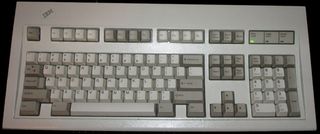
Because nothing can match the feel of an original IBM model M, I still use one as my primary keyboard every day. Sure, it makes a little noise, but I can type 10 to 15 wpm faster on it, because of the springy feel. Wouldn't we all like to type faster and make fewer errors?
How to get an IBM Model M today: Though IBM stopped making the keyboards in 1993, a Kentucky-based company called Unicomp Keyboard products licensed the technology and sells its keyboards through the site PCkeyboard.com. These new keyboards come with USB ports, perfect for connecting to your notebook. Companies such as Razer, Steel, and Das Keyboard also market mechanical keyboards.
In terms of notebook keyboards, Lenovo ThinkPads have the most Model M-like feel. Though they do not use springs, ThinkPad keyboards were originally developed by the folks at IBM and have the strongest feedback of any notebook.
16:10 Screens
As recently as two years ago, notebooks with 1280 x 800 or 1440 x 900 resolution screens were commonplace. Then the bozos in the display panel industry figured out they could save a little on production costs by making the glass wider and using the same 16:9 aspect ratio found on most HDTVs. The result: almost all of today's notebooks with 15-inch and smaller screens have a 1366 x 768 resolution.
Moving from 1280 x 800 to 1366 x 768 results in a 4-percent reduction in vertical work area. That's a couple of lines of text or a good portion of an image that used to appear "above the fold" on web pages, word docs, or spreadsheets, that now requires scrolling to see. The industry calls its new standard "HD," but I call it a huge step backward.
How to get 16:10 screens today: Apple is the only major OEM that still uses 16:10 screens on its notebooks. That said, even if you don't get a Mac, you can opt for a notebook with a 1600 x 900 or 1920 x 1080 resolution and some external monitors with 16:10 are still sold. Ironically, new Android tablets like the Motorola Xoom have 1280 x 800 screens.

The HP Pop-Out Mouse
At the beginning of the 90s, there were huge questions about how to replicate the mousing experience on a portable PC. Most manufacturers experimented with trackballs, but a few engineers at HP had the brilliant idea of creating a mouse that popped out of a compartment on the side of the notebook, and they implemented this idea on exactly one system, the HP OmniBook 300.

With so many notebook touchpads suffering from jumpiness and inaccuracy, we need fresh navigation ideas like HP's pop-out mouse more than ever in 2011.
Where to get a pop-out mouse today: Obviously, there are no notebooks with this feature today, but you can always carry a wireless mouse with you. Mogo even sells a line of wireless mice that you can store and charge inside an ExpressCard/54 slot (if your notebook has one) or attack to the lid. Notebooks with pointing sticks like Lenovo ThinkPads and the Dell Latitude line offer the most accurate built-in navigation experience available today.
The BlackBerry Scroll Wheel
BlackBerry smart phones used to have scroll wheels on the side, which allowed users to quickly navigate through their inboxes. You could even push the wheel in to open an e-mail or click a menu item. In recent years, RIM has replaced the wheels with trackballs and then with tiny touchpads that allow users to move in more directions, but the problem with these new pointing methods is that they can be wonky.
Scroll wheels worked really well because you could use them with your thumb while gripping the phone on its side. I wish RIM and other handset makers would bring back the wheels for quick scrolling.

How to get scroll wheels today: Your only option is to buy an old BlackBerry on eBay, which is not very appealing.
Classic Joysticks
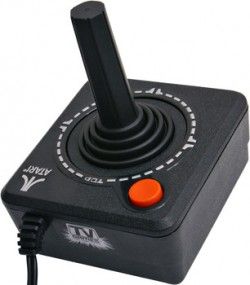
Staring at an Xbox or PS3 controller today is an exercise in information overload. That thing has so many little buttons and pads that I can't even figure out how to karate kick someone in Mortal Kombat without mashing them all at once just to see what works. Remember the days when a large, single stick and single button where all you needed? Let's bring those back. People even wrote disco songs about the beauty of this peripheral.
An entire generation has grown up without the joy of blowing away space invaders with just a single button. Heck, Pac Man didn't even use the button!
Where to get a joystick today: A number of sites, including ThinkGeek, sell USB versions of the classic Atari stick or arcade sticks with the little red ball on top. You can download Atari or Arcade emulators such as Stella or MAME to play the old games on your notebook. iOS users should check out the new Atari's Greatest Hits app, though it does not support joysticks.
Portable AM Radios
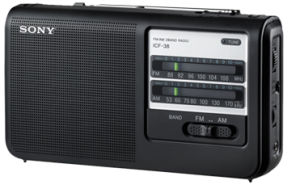
Sure, you can get news, weather, and sports scores on your smart phone, but there's nothing that fully replicates the experience of listening to local news or talk on your phone in real-time. Streaming stations can stutter as you drop in and out of good 3G / 4G coverage and, if you want to get sports events live on your phone, you'll have to pay hefty subscription fees--if you can get them at all.
Oh, and what happens if there's an emergency and mobile broadband goes down? How do you get your news then? I wish someone would build AM radio into a phone or tablet, but I suppose that's too much to ask.
Where to get portable AM radio today: Yes, you can still buy one. I particularly like the Sony SRF-M37W because it's about as small as an iPod. If you're willing to spend the money and want to listen to baseball games on your phone, the MLB At Bat 11 app costs $14.99 for Android, iOS, and BlackBerry.
Software You Don't Need to Install
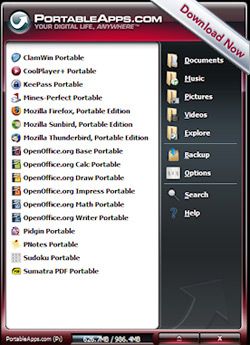
Today, installing new software on your PC is a time-consuming task. The last time I put Adobe CS5 on a system, it took over 10 minutes and Office 2010 was up there too. Worse still are games like World of Warcraft, which download an hour's worth of updates before they'll let you play.
To add insult to injury, it can take several minutes and a system reboot to remove an application you no longer need. I mean how long does it take just to delete these files? Ridiculous.
Back in the DOS days, you could run software directly off of an external disk or simply copy it to a folder on your hard drive. Why can't we get back to that?
How to get software that doesn't require an install: There are a number of portable applications that will run off of a USB key available for free on PortableApps.com. Kingston also offers its urDrive portable software on select USB flash drives.
Calculator Watches
There's a huge problem with wristwear today: not enough buttons! Back in the 80s, getting a calculator watch was all the rage amongst geeks. Even if I didn't need to do any math on mine, I'd still do equations just so I could hit the buttons.
Today, most watches are boring. However, touchscreen watches like the Sony Ericsson LiveView, which shows e-mail from your phone, have some promise--if not enough buttons.

Where to get calculator watches today: Though they are no longer in vogue, the good news is that Casio still sells them under its DataBank brand.
20-inch Notebooks
It was only four years ago that you could get your choice of the 20.1-inch, 15.5-pound HP Pavilion HDX or the 18.3-pound Dell XPS M2010. How times have changed! In 2010, the largest notebook we tested was the 18.4-inch, 10.6 pound Toshiba Qosmio X505-Q890. Some would argue that nobody needs a 20-inch notebook that weighs nearly 20 pounds, but something has been lost in the decision to kill this form factor.
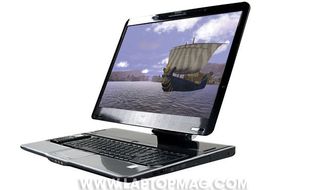
Notebooks of this size and weight can provide a true desktop experience, while being portable enough to carry to a gaming party, back and forth from college, or to a different room of the house. The Dell M2010 even had a keyboard that fully detached and eight speakers.
Where to get a 20-inch notebook today: As far as I know, no notebook manufacturer still makes a 20-inch notebook, but several make all-in-one desktops that are nearly as compact as a notebook. If you still want a giant notebook, the Toshiba Qosmio X500 series and ASUS NX90 series are large 18-inchers.

